AdWords is one of the most effective methods of driving traffic to your e-commerce website. However, if poorly managed, it can result in a huge waste of money.
In this post, I'll teach you 8 mistakes that could be frustrating your AdWords efforts.
I'll also show you, step by step, how to fix the mistakes so you can unlock the full potential of AdWords and achieve the maximum possible ROI.
1. Running Ads When Your Products Are Out of Stock
Running your ads when your products are out of stock is a sure-fire way to burn through your budget with no return. If you've got a large inventory of several thousand products, then it's hard to keep track of what is and what is not in stock.
However, there is now a smart way to keep track of your whole inventory and automatically pause ads when your products are out of stock.
Russell Savage recently wrote a script that allows you to do this automatically at scale, even if you have an inventory of tens of thousands of products.
When Base Fashion introduced a similar feature, they saw an increase in their conversion rate of 12%.
To implement this into your account, follow these 6 steps:
Step 1. Go to this URL and copy the script.
Step 2. Go to your AdWords account and, under “Bulk operations,” select “Scripts.”
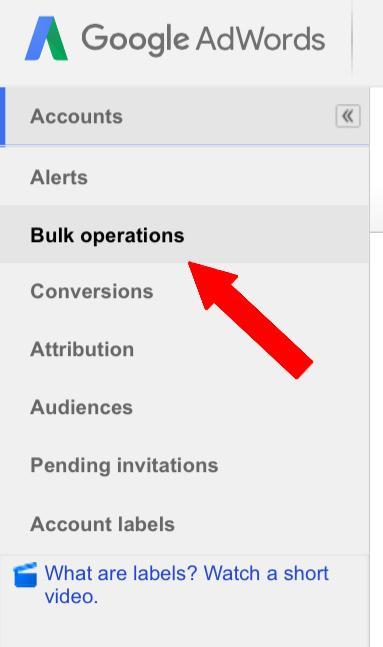
Step 3. Click “+ Script” and paste the script that Russell Savage wrote into your account.
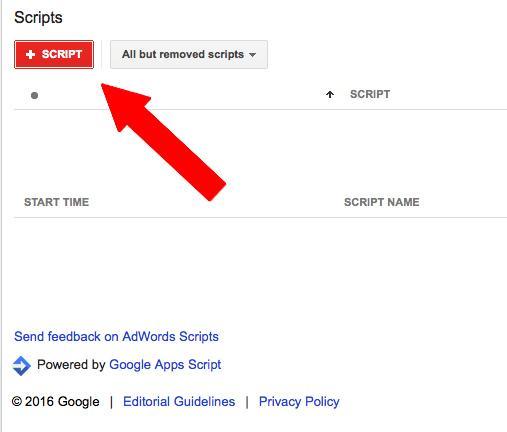
Step 4. You will need to slightly modify the script. Don't worry, you don't need any coding experience for this. Find an out-of-stock product on your website and check your website's source code. Search for the word “stock,” and you should see that one of them will look something like this: “in_stock”:false. Make a note of this.

Step 5. Check a product that is in stock, and you should see something like this: “in_stock”:true.
Step 6. Go to line 23 of the script and replace the OUT_OF_STOCK_TEXT variable with the one you found on the page. In this case, “in_stock”:false. Because this is different for every website, I would recommend using Russell Savage's script on one product first as a test to be sure you have identified the variable correctly.
2. Not Building Granular Accounts with Adverts for Each Product
Building incredibly granular accounts that target adverts at category pages, right down to subcategory and product pages, is the key to success with AdWords. But I still see advertisers who don't write adverts for every product they stock.
By writing ads for each product, you can capitalize on high click-through rates and conversion because shoppers searching for exact products are late in the buying cycle. Conversion rates of 5-10% are common.
If you have a large account of thousands of products and you have new products going in and out of stock all the time, this can seem like a daunting task. There is, however, a smarter solution.
Both Google DoubleClick and AdWords Robot have introduced something called inventory-aware campaigns that create ad groups, adverts, and keywords for all your products automatically, using pre-defined templates, based on the data in your Google Merchant Center.
Here is how it works:
By implementing this strategy, a trendy apparel and accessories company was able to increase their conversion rate by 50% and their CTR by 26%. The most staggering fact was that they were able to save 38 hours by automating this task.
3. Not Adding Social Proof to Your Ads
Trust symbols and reviews are a great way to build trust in your brand and occupy more real estate on the first page of Google search results. (Studies have shown that 61% of users read online reviews before making a purchase online.) There are two main ways to obtain this trust and positioning – seller rating extensions and review extensions.
Seller rating extensions are the 5 stars that appear alongside your adverts in Google search results. Below, you can see Comparethemarket using them effectively.

A study by Google found that by implementing these extensions, advertisers have seen rises in CTR of 17% and increases in conversions of up to 4.8% with 50 positive reviews.
The easiest way to implement this type of extension is to sign up to an independent review service that has been approved by Google, such as Revoo or Trustpilot. Simply acquire 30 customer reviews over a 12-month period on one of Google's partnered review providers, and the stars will automatically appear alongside your ads.
Review extensions are another way to add social proof to your ads. To add review extensions to your ads, you will need an independent review on a reputable website.
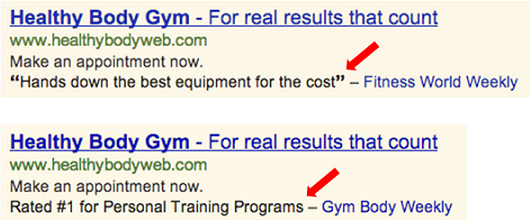
By implementing review extensions, advertisers have seen increases in click-through rates of between 26-44% depending on the industry, and increases in conversion rates of approximately 27%.
Review extensions can be implemented within the “Ad extensions” section of the AdWords interface.
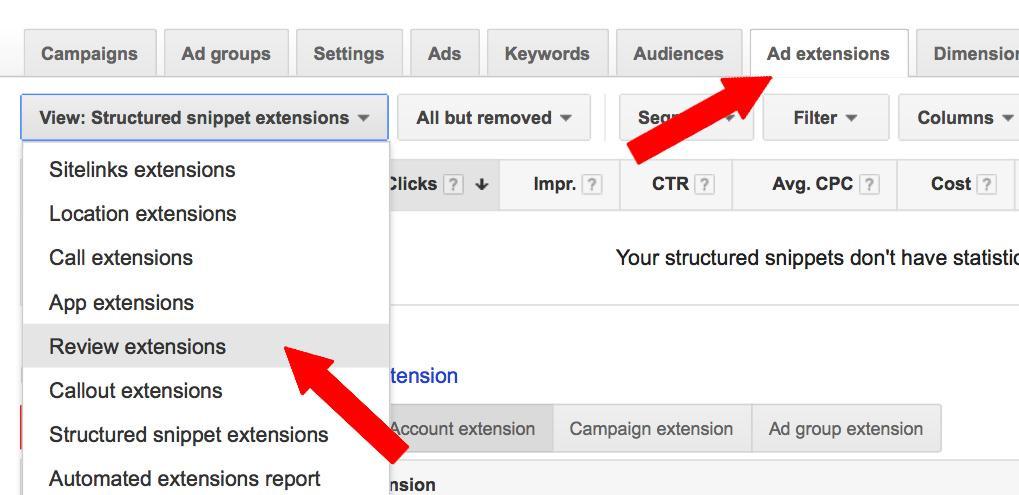
4. Not Using AdWords Countdowns to Create Urgency During Sales
When I'm browsing through Google, I see no end of advertisers running sales without countdown timers to generate urgency and increase CTR's and conversion rates.

Matt Umbro recently ran a case study on the effect of using countdown timers. They saw the CTR increase from 2.87% to 4.02% for adverts with a countdown timer and a $3.66 decrease in cost per conversion.
It's also interesting to see how conversions increased dramatically as the number of days to the end of the sale decreased. If you look at the graph below, you will see that conversion rate increased from 8.24% to 10.80% at its peak just before the sale.
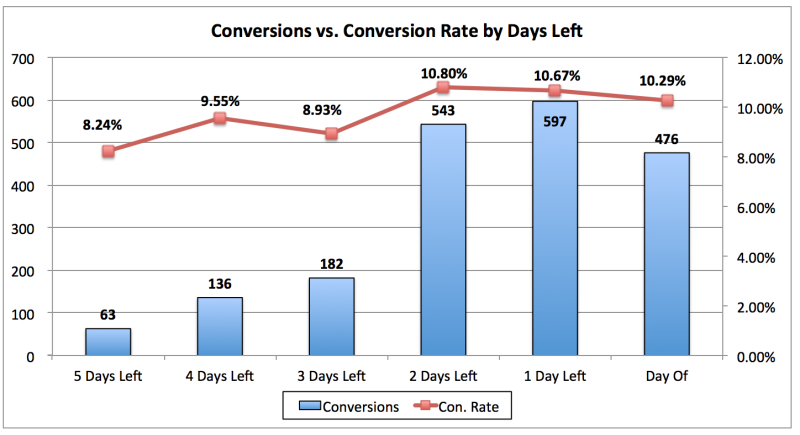
If you want to start using countdown timers inside your ads, then follow these steps:
Step 1. Go to this URL and copy the script.
Step 2. Go to your AdWords account and, under “Bulk operations,” select “Scripts.”
Step 3. Click “+ Script” and paste the script that Russell Savage wrote into your account.
Step 4. Apply the script to the ad groups or campaigns that contain the adverts you want the countdown timer to run for. Full instructions on how to edit the script to do this are on Google's Developers page.
Step 5. Add parameters to your advert that will be replaced with the number of hours remaining. For example: Only {param1:a few} days {param2:and} hours left!
5. Not Considering Attribution Modeling When Bidding or Pausing Ads
Savvy shoppers make as many as 9 visits to your e-commerce store before they make a purchase. However, Google shows you only the last keyword that was clicked on before a user makes a purchase.
What this hides is that you have several profitable keywords within your account contributing to conversions, but they have no conversions attributed to them.
Because the keywords look unprofitable, advertisers routinely pause them, thinking that they are a waste of money. However, without these keywords, users would not have found the brand and consequently would not have made a purchase down the line.
For example, here is a search funnel for a fictitious airline company. You can see that a searcher first found the website by searching “Hawaii vacations,” then saw an ad when they searched “flights to Hawaii,” and then finally visited the website again when they searched “flyaway Hawaii” to book their holiday. In the company's AdWords reports, the company would see only one conversion for “flyaway Hawaii,” which would hide the fact that without having ads appear for “Hawaii vacations,” the searcher would never have found the website.
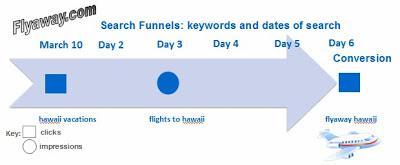
To see the keywords that contributed to the conversion, the company would need to look at the click-assisted conversions column and the impressions-assisted conversions column. These would show which keywords and adverts contributed to a conversion.
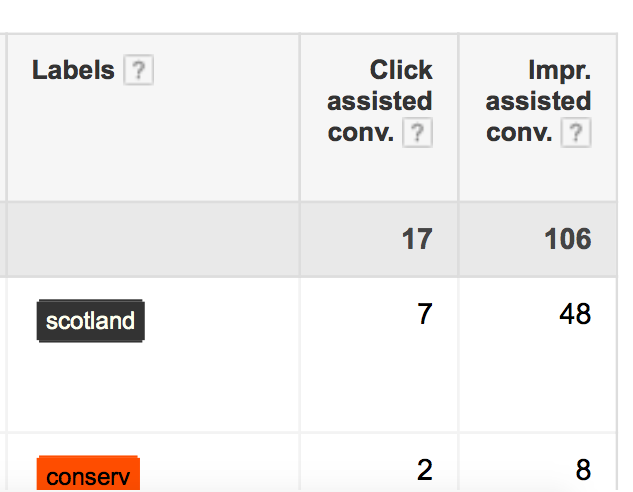
Before you pause a keyword that is not performing well, make sure you view these columns. Also, make sure the keyword is not part of a search funnel. Otherwise, you are likely to significantly reduce your conversions if the keyword is fundamental to people discovering your brand in the first place.
Attribution modeling is also important when bidding in AdWords, and it's very important that you choose the right model. Google provides 5 different models you can use to analyze your data. As this is quite an in-depth topic, I won't discuss it here. However, to learn about it, I would suggest reading “embracing the reality of multi-touch attribution.”
6. Not Using Single Keyword Ad Groups for Top-Performing Keywords
Single keyword ad groups are one of the most effective methods of improving the performance of your account. When Audi applied them to their account, they saw a 50% reduction in the cost per lead and a 106% increase in conversions.
So, what are single keyword ad groups and why do they work this well?
Simply put, they are ad groups with just one keyword and two ads.
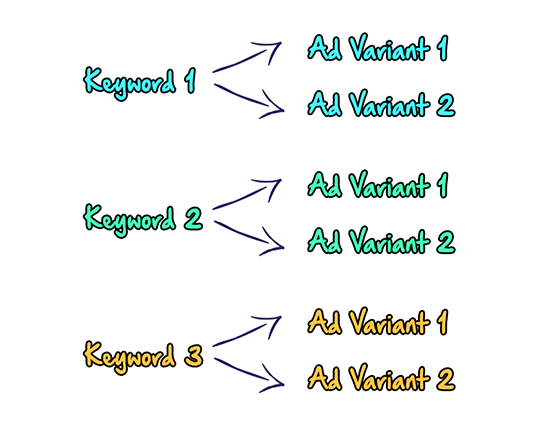
The reason this works so well is the ads in the ad group will show only for that one keyword, which means you can make the ads highly specific to that keyword. As a result, you will see a considerable increase in CTR.
Furthermore, you can direct people to the most relevant landing page. For example, if the keyword is men's medium red t-shirts, you can use the filters on your website to send users to that exact page. The beauty of this is that you achieve a good increase in conversion rate as people see exactly what they searched for straight away.
In an ideal world, you would have every keyword in your account in its own single keyword ad group. But the problem with doing this is that it would take forever. Instead, be smart. I have found that 85% of conversions come from the top 5% of keywords in an account. This roughly correlates to every search query with 2 or more conversions. So create single keyword ad groups only for these search queries.
I won't go through how to create single keyword ad groups here because there are already several guides, such as this one and this one from Unbounce.
7. Not Managing Google Shopping Search Queries Effectively
If you have thousands of keywords generating thousands more search queries, keeping on top of them can be very difficult and time-consuming. However, there is an easier way. It takes a little bit of time to set up, but once you have it set up, it will work automatically, and you won't need to think about it again.
Daniel Gilbert recently wrote a script that effectively puts the keywords back into AdWords Shopping Campaigns.
It works like this: You add the keywords that you want your shopping campaigns to be shown for into a spreadsheet. The script then reads the search query report. If the search query does not match your keywords in your spreadsheet, then it's added as a negative keyword. Each ad group has its own set of keywords, which can be defined in a spreadsheet, giving you unlimited control.
To get this script to work, all you have to do is download it here, and then create a new spreadsheet in Google Docs.
In your spreadsheet, you need three columns – campaign, ad group, and keywords. Every row of the campaign column should read “Exact Shopping.” Then, enter the ad groups and the only keywords that you want your shopping ads to be shown for in the ad group and keywords columns.
Finally, change the URL in the script on line 15 to the URL of your spreadsheet, and schedule the script to run once per day. The script will run daily and will add any search queries from the previous day that don't match your keyword list as negative keywords.
8. Not Knowing Your Customer Lifetime Value
One thing that surprises me when I'm managing e-commerce AdWords accounts is the number of advertisers who don't know their customer lifetime value. On average, 32% of customers will place a second order within the first year of purchasing from you, and 5.48% will purchase from you 6 times.
Furthermore, on average, the customer lifetime value is 46.2% higher than the initial purchase value. Of course, this will vary from industry to industry.
To maximize your PPC returns, you need to do two things. First, you need to maximize your customer lifetime value by adding upsells, encouraging purchasing multiple items using offers, and selling effectively using email campaigns, to name a few. By doing this, you can afford to spend more to acquire customers, and you can generate a lot more traffic to your website.
Second, you need to calculate your customer lifetime value. Once you know your customer lifetime value, you can better assess how much to spend on your paid search marketing campaigns, and you can scale your budgets accordingly.
Conclusion
Any of these 8 AdWords mistakes can have a significant impact on your ROI. So review your AdWords account and ensure that you're not making these mistakes. If you are, take positive steps to fix them.
Do you have any questions after reading this article? Just leave a comment below and we can discuss it.
About the Author: Wesley Parker is the founder of Clicteq. He is available to manage your paid search campaigns.
No comments:
Post a Comment